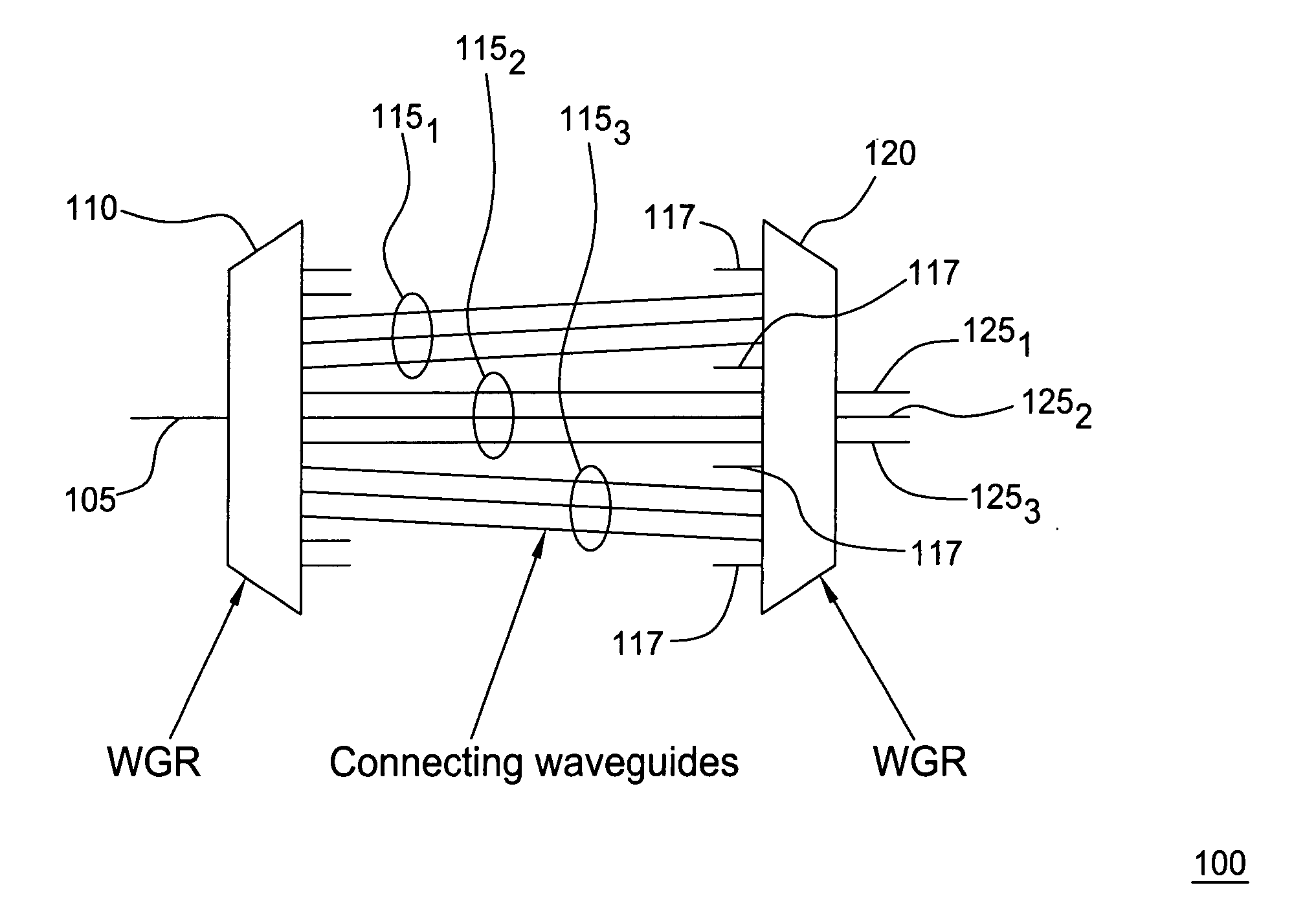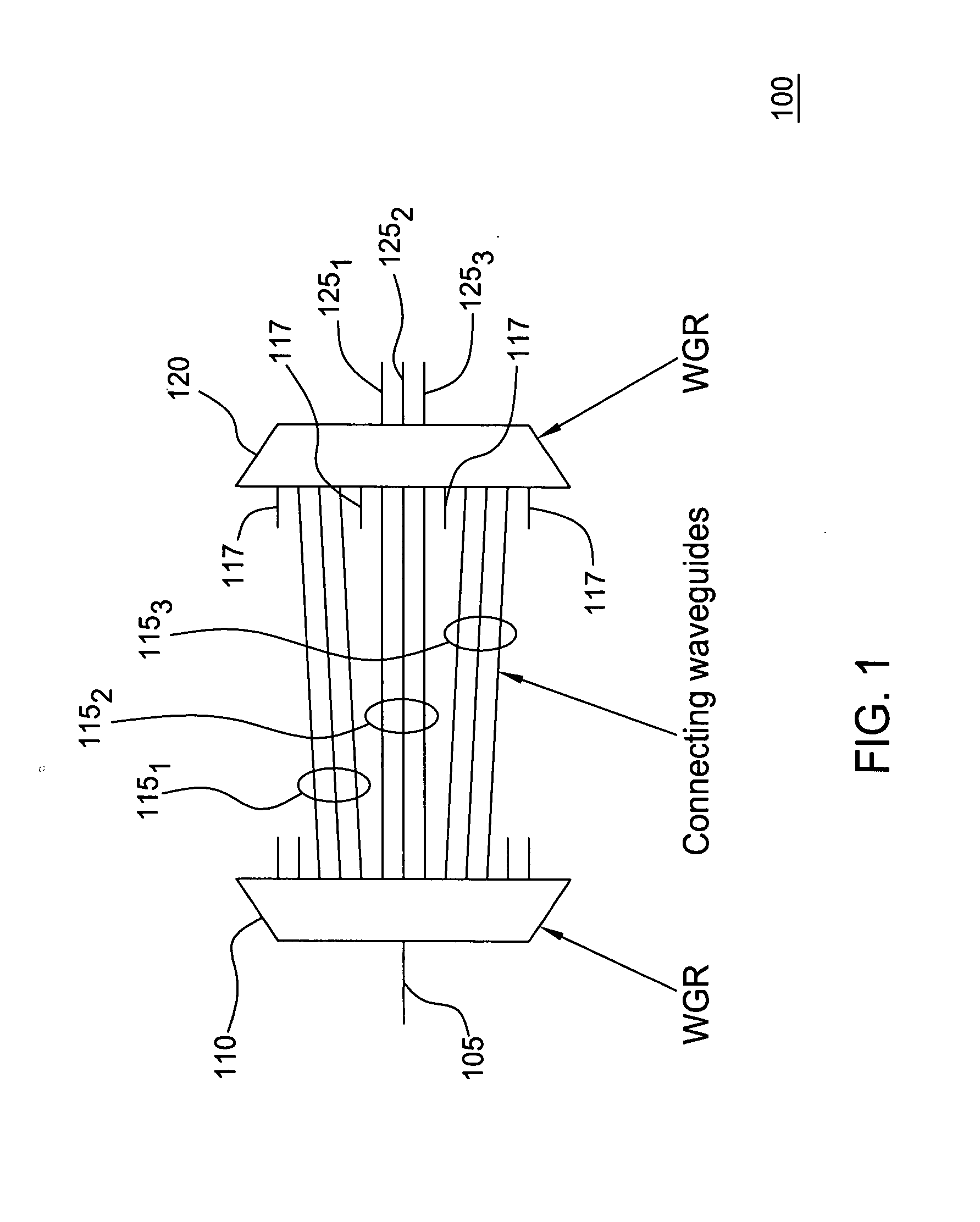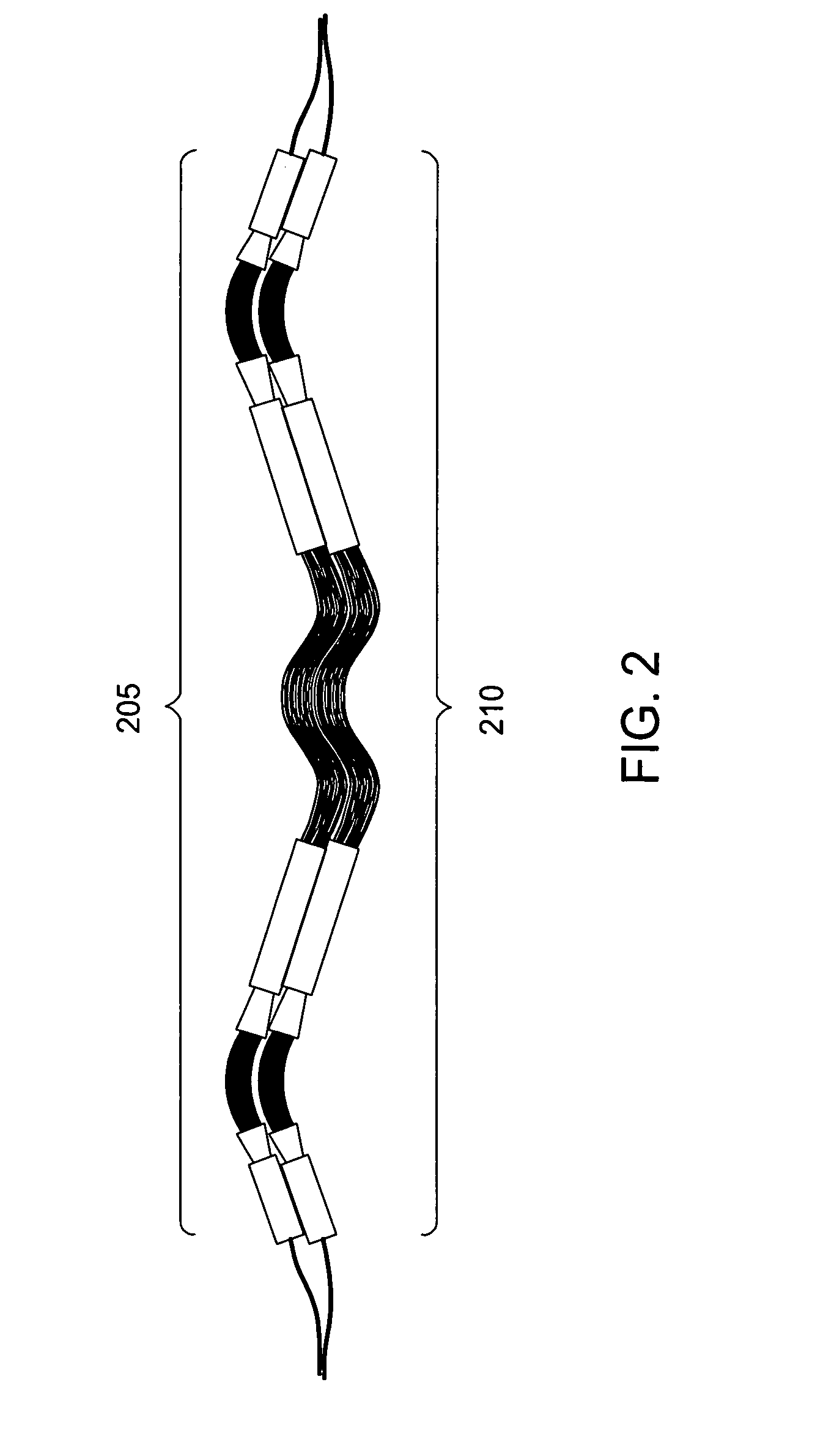Integrateable band filter using waveguide grating routers
a waveguide grating router and integrated technology, applied in the field of optical band filters, can solve the problems of increasing the size and complexity of filters, increasing the cost of mass production on any scale, and exhibiting significant chromatic dispersion of filters, so as to reduce ripple, reduce the effect of loss band, and easy fabrication
- Summary
- Abstract
- Description
- Claims
- Application Information
AI Technical Summary
Benefits of technology
Problems solved by technology
Method used
Image
Examples
Embodiment Construction
Optical filters based on waveguide grating router structures have been described in the art. In particular, one such filter wherein two waveguide grating routers are coupled together by a region including two additional waveguide gratings separated by a plurality of optical elements such as phase shifters, switches and the like is described in U.S. Pat. No. 6,603,898 entitled “Apparatus and method for achieving a smooth spectral response optical filter”, issued Aug. 5, 2003, which is incorporated herein by reference in its entirety.
Although various embodiments of the present invention herein are being described with respect to a 1×3 optical band filter, it will be appreciated by those skilled in the art informed by the teachings of the present invention that the concepts of the present invention are applicable to band filters comprising substantially any number or combination of inputs and outputs.
FIG. 1 depicts a high-level block diagram of one embodiment of a band filter in ac...
PUM
 Login to View More
Login to View More Abstract
Description
Claims
Application Information
 Login to View More
Login to View More - R&D
- Intellectual Property
- Life Sciences
- Materials
- Tech Scout
- Unparalleled Data Quality
- Higher Quality Content
- 60% Fewer Hallucinations
Browse by: Latest US Patents, China's latest patents, Technical Efficacy Thesaurus, Application Domain, Technology Topic, Popular Technical Reports.
© 2025 PatSnap. All rights reserved.Legal|Privacy policy|Modern Slavery Act Transparency Statement|Sitemap|About US| Contact US: help@patsnap.com



